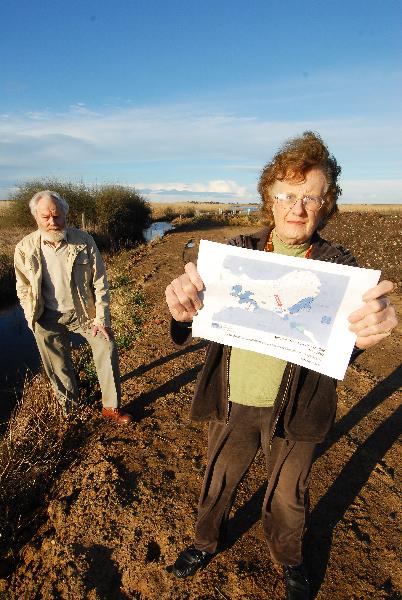By NOEL MURPHY
ENVIRONMENTALISTS have welcomed a state study that threatens to stymie a $4billion residential development on Moolap’s disused saltworks.
Several groups have cited fears for bird habitats since Ridley Corporation floated plans for Nelson Cove, promising 5000 homes and thousands of jobs.
“There’s no question the saltworks should be retained in public ownership to be managed as a nature reserve to be enjoyed for its recreational and environmental values,” said Geelong Environment Council’s Joan Lindros.
“The saltworks have been subjected to ongoing degradation following their closure in 2007. Much of this has resulted from Ridley’s failure to maintain appropriate water flows at the site but this can easily be reversed.”
Geelong Field Naturalists Club’s Bruce Lindsay, a former Greens candidate, was “cautiously optimistic” about Environment Minister and Bellarine MP Lisa Neville’s plans for a land-use study.
“Minister Neville has indicated the study would include consideration of the area’s environmental values and we’re keen to understand what that will mean for the former saltworks site.”
BirdLife Australia and Bellarine Catchment Network also welcomed the study.
“Moolap provides important habitat for a suite of resident and migratory shorebirds,” said BirdLife’s Jenny Lau.
“It’s an integral part of the Port Phillip (western shoreline) and Bellarine Peninsula Ramsar site and is known habitat for EPBC-listed threatened species such as fairy tern and orange-bellied parrot.”
The Nelson Cove project, pegged for disused land between Moolap and Point Henry’s abandoned Alcoa site, would help revitalise a flagging Geelong economy as major manufacturers pack up and move away.
The State Government study follows the environment council and Queenscliff Environment Forum demanding last year legislative safeguards for 18 wetlands across the Bellarine Peninsula, including the Cheetham salt fields and Point Henry.
They called on Ms Neville to order Victorian Environment Assessment Council to draft protections for the sites.
Tens of thousands of migratory and resident waterbirds thrive on the wetlands, some species travelling from as far as Siberia.











